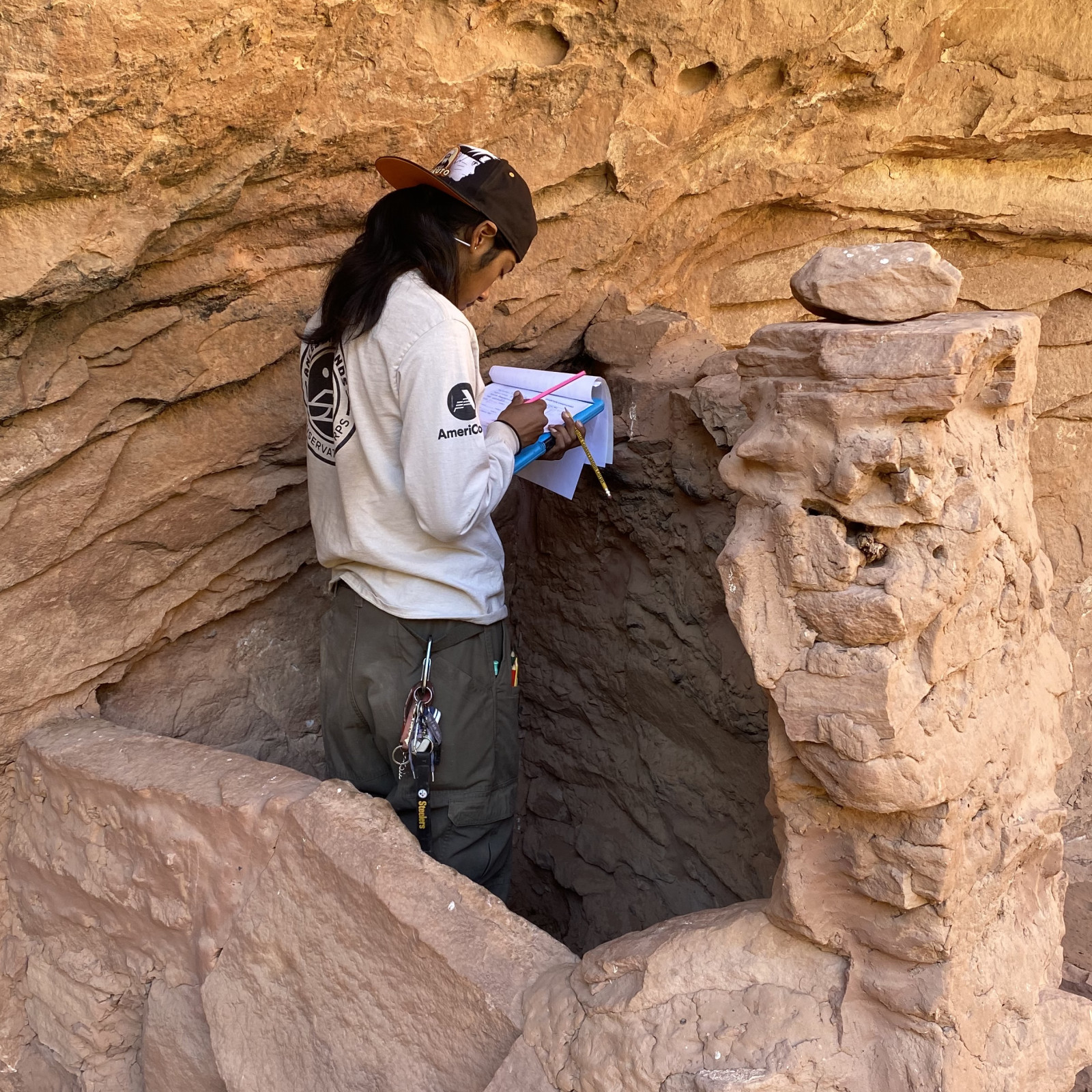
For Bears Ears Partnership (BEP), cultural site conservation projects provide the perfect setting for collaborative work. It’s where our Field Program works alongside partners - including Ancestral Lands Conservation Corps (ALCC), Living Heritage Anthropology (LHA) and Woods Canyon Archaeological Consultants (WCAC) - to achieve the shared goals of conserving cultural sites from the impacts of recreation and visitation, while connecting and reconnecting Indigenous communities to the very landscape we collectively work to protect.
These partnerships not only make our conservation goals possible, but also help shape our Field Program’s unique approach: at its core, our collaborative work is guided by the understanding that the physical landscape only makes up half of the equation - the other half being the human connection.
In just the last couple of years, this approach has helped shape several significant conservation projects. For example:
In 2021, the Forest Service identified a backcountry site in urgent need of visitor impact mitigation, calling in our Field Program for help. In response, we raised funds to partner with an ALCC crew from the Pueblo of Zuni and WCAC to protect the site from additional damage. Members from the Zuni cultural resource advisory team and ethnographers from LHA also hiked in for an on-site visit to spend time with crew members, share, and document stories. As a result, the impact of this hitch reached beyond the physical landscape, to further develop crew members’ relationships to the land.
This past fall - alongside ALCC crew members, also from the Pueblo of Zuni, and WCAC staff - we conducted archaeological assessments for several backcountry sites in Bears Ears National Monument. ALCC was involved every step of the way - from the planning and proposal stages, to survey work and data collection, to eventually leading the on-the-ground work. Through this partnership, crew members are gaining new skills, expanding leadership for future conservation efforts and opening pathways for future employment in fields such as resource management and archaeology.
 The outcome of these projects “becomes much more than accomplishments and deliverables,” says Kevin Cooeyate, ALCC Zuni Program Manager. “The chance to reconnect physically, mentally, emotionally, and spiritually brings a well-rounded notion to a past that once was and a future that will be. Through shared songs, prayers, energy, laughs, struggles, tears, offerings of food, time, etc. the participants are able to once again embed in the Land, an ancestral way of life that once impacted the area in such a positive way.”
The outcome of these projects “becomes much more than accomplishments and deliverables,” says Kevin Cooeyate, ALCC Zuni Program Manager. “The chance to reconnect physically, mentally, emotionally, and spiritually brings a well-rounded notion to a past that once was and a future that will be. Through shared songs, prayers, energy, laughs, struggles, tears, offerings of food, time, etc. the participants are able to once again embed in the Land, an ancestral way of life that once impacted the area in such a positive way.”
The complexity and scale of BEP’s Field Program has certainly grown since its early days; we’ve evolved from periodic, volunteer-run field projects to a robust contractor-based program, working alongside our partner organizations to make our shared goals possible, with impacts reaching far beyond the physical landscape.
Looking to 2023, the field program will continue to grow: alongside our partners, we plan to complete 18 weeks of full-time conservation work on Forest Service and BLM lands. “I’m excited about the future of the BEP Field Program,” says Field Program Director, Britt Hornsby. “We are busy working with our partners to improve Tribal engagement and connection to our conservation work. We’re also diversifying our conservation projects for more program sustainability and partner engagement. We’re part of a new paradigm of conservation and excited to contribute to the ongoing conversation.”
Stay tuned for the next article in this three-part series on the collaborative conservation work BEP Field Program is doing alongside our incredible partners!

